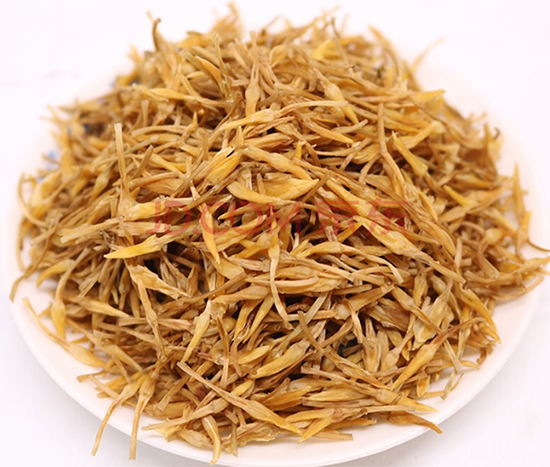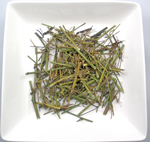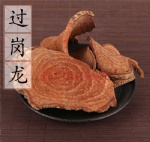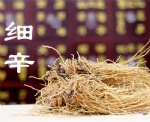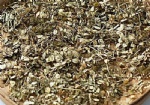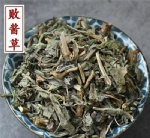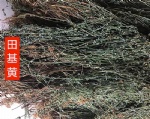
|
KWOK SHING HONG |
|
|||
Products CategoryContact Us
Add: China |
FLOS JASMINIProduct name : FLOS JASMINI Item : 79351486340 Details :Frangipani (Jasminum grandiflorum L.), a perennial climbing shrub of the genus Frangipani in the family Oleaceae. Climbing shrubs, branchlets cylindrical, with ribs or grooves; leaves opposite, rachis often with narrow wings, leaflets ovate or long ovate; cymes terminal or axillary, peduncle long, bracts linear, calyx absent Hairy, lobes conical linear, corolla white, tall saucer-shaped; flowering period is August-October; fruit not seen. Because the color of the flower is white and light, it is fragrant and fragrant, so it is called frangipani. The origin of frangipani is in China, and now it is distributed in Yunnan, Sichuan, Guangdong and other places in China, and it is also distributed in Africa and Australia. Frangipani likes light, tolerates half shade, slightly cold-resistant, and drought-tolerant, and is suitable for well-drained, fertile and moist soil. The propagation of frangipani generally adopts cuttings and layering. Frangipani flower buds can be used as medicine, which has the effects of soothing the liver and relieving stagnation, promoting qi and dispelling stagnation, regulating menstruation and relieving pain, and skin itching; it is also recorded in "Lingnan Herb Collection" that frangipani should be kept in a greenhouse to relieve heart-qi depression and pain, and relieve pain. Abdominal pain. Frangipani vines are coiled, thick green, white flowers, and fragrant flowers, which can be called elegant. "Hua Jing" said that it is "the flower is like a plum but more fragrant than it", and it is the most beautiful of autumn flowers. Frangipani can be eaten with meals, and the amount of food should not be too much each time. Frangipani grows in the south, is evergreen in all seasons, blooms in spring, white or yellow in color, and shaped like a winter plum, also known as "jade hibiscus". Frangipani flower buds can be used as medicine, which has the effects of soothing the liver and relieving stagnation, promoting qi and dispelling stagnation, regulating menstruation and relieving pain, and skin itching; it is also recorded in "Lingnan Herb Collection" that frangipani should be kept in a greenhouse to relieve heart-qi depression and pain, and relieve pain. Abdominal pain. Nature and flavor are bitter, flat, nontoxic. Efficacy Soothing the liver and relieving depression; promoting qi and relieving pain. Mainly treats hypochondrium abdominal pain caused by liver depression and qi stagnation; diarrhea and abdominal pain. For stomach pain, hepatitis, irregular menstruation, dysmenorrhea, leukorrhea, stomatitis, itchy skin, orchitis, mastitis, lymph node tuberculosis. Frangipani also has the function of skin care and beauty. It is also used clinically to treat pain caused by liver cancer, gastric cancer, and intestinal cancer. It can also be used to treat anemia caused by various reasons. Common prescription Frangipani can also be used as medicine. Its nature is flat and non-toxic. It can "relieve heart-qi depression and pain, stop diarrhea and abdominal pain.", treat liver pain caused by hepatitis and cirrhosis, chest and flank discomfort, heart and stomach gas pain, diarrhea and abdominal pain: Frangipani 6~9 grams, decocted in water or brewed in tea . Treatment of skin pain and itching: Appropriate amount of Frangipani flower, decoct and wash the affected area. Treatment of stomatitis: Frangipani, decoct thick juice and gargle. chemical composition Frangipani contains linalool, benzylacetate, (Z)-3-vinyl ester (Z) 3-hexenylbenzoate, cis-jasmone, indole ( indol), jasminelac-tone and methyljasmonate. Barcode: 79351486340 Ingredients: Frangipani Specifications: 16oz (454g) Efficacy: soothing the liver and relieving depression; promoting qi and relieving pain. Mainly treats hypochondrium abdominal pain caused by liver depression and qi stagnation; diarrhea and abdominal pain. For stomach pain, hepatitis, irregular menstruation, dysmenorrhea, leukorrhea, stomatitis, itchy skin, orchitis, mastitis, lymph node tuberculosis. Send Inquiry : |
Home
|
About Us
|
Products
|
News
|
Feedback
|
Contact Us
|
SiteMap
Copyright © 2025 KWOK SHING HONG All Rights Reserved
Copyright © 2025 KWOK SHING HONG All Rights Reserved






 KWOK SHING HONG
KWOK SHING HONG  GRASS
GRASS 